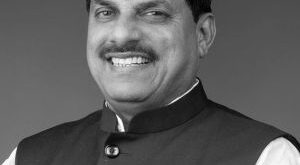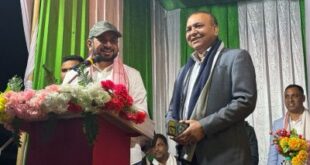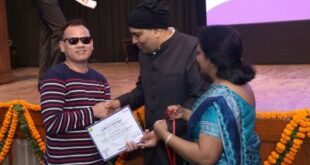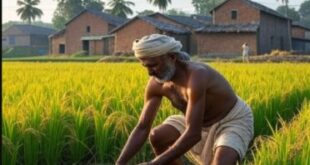India’s farmers have long played a pivotal role as custodians of the country’s food security. But they find themselves beset by challenges just when the country needs their farmlands to be at their productive best.
India, home to 1.4 billion people, is already the world’s most populous country. Its population, still growing, is only expected to peak at a whopping 1.7 billion in 2062.
This population surge, combined with a growing economy, rising disposable incomes, increasing urbanization and rapidly evolving dietary habits, is creating unprecedented demand for food.
India needs its farmlands to step up if it is to keep its growing population fed and hold on to its mantle as one of the world’s largest food exporters. We have to do this at a time when global warming-induced climate change is wreaking havoc, causing everything from disrupted weather patterns and extreme events to more frequent pest attacks.
To put it simply — India’s farmlands are being called upon to produce more food than they ever have at a time when growing that food has never been harder.
This pressure to meet growing domestic and global food demand is exacerbating the challenges farmers in India have already been grappling with like high costs of production, reduced farm incomes and cumbersome debt burdens.
Clearly, the approach to farming needs a re-think. We need to equip the agriculture sector and our farmers to meet the challenges facing them not just today but the challenges they will face tomorrow.
We need to equip them to boost the productivity of their farmlands while building resilience to the ever-worsening effects of climate change.
Technology could hold the key.
New-age digital solutions powered by Artificial Intelligence (AI), Machine Learning (ML), sensor-based Internet-of-Things (IoT) has transformed nearly every aspect of human existence.
Similarly, it has the power to revolutionize India’s farmlands.
It can enable precision agriculture, a practice that uses technology and data on soil and crop health to determine the specific quantity and timing of water, nutrients and protection products a crop needs based on which stage of its growth cycle it is in.
Precision agriculture, therefore, turns farming into a far more regenerative, resource-responsible practice which brings down costs, boosts yields and therefore farm incomes, while also conserving soil health.
Other aspects of digital agriculture can help farmers plan crop cycles better.
Satellite technology, for instance, can help predict weather more accurately. This information can help farmers plan sowing and harvesting cycles to coincide with the most favorable weather.
This is crucial in today’s age of disrupted weather patterns, with delayed or unseasonal rainfall affecting yields of key seasonal crops like monsoon rice and winter wheat.
Digitization can also prove to be a formidable weapon against pest attacks. Drones, for instance, can fly over large tracts of land fast. Their imaging technology can scan for signs of a pest or disease outbreak, alerting farmers to it before it has had a chance to spread too far.
Digitization has already shown results. The World Economic Forum’s AI for Agriculture Innovation initiative carried out in collaboration with the Telangana government, for instance, helped chill farmers in the state achieve a 21 percent increase in yields.
At the same time, it helped them reduce pesticide use by 9 percent and, most crucially, delivered an $800 income boost per acre per cycle.
In fact, on a broader scale, research shows that digital agriculture has the potential to boost agricultural GDP of low-and-middle income countries by over $450 billion or 28 percent a year.
This is as strong a reason as any to change the way we do farming. The world is now in a digital age. Farming needs to go digital too. India’s farmers have sacrificed much to help the country achieve food security often at great cost. This food security has been the bedrock underpinning the economic growth that has made India prosperous. It’s time we recognized this. It’s time we empowered our farmers to prosper too.
By Ashish Dobhal, CEO of UPL SAS
 Newspatrolling.com News cum Content Syndication Portal Online
Newspatrolling.com News cum Content Syndication Portal Online







